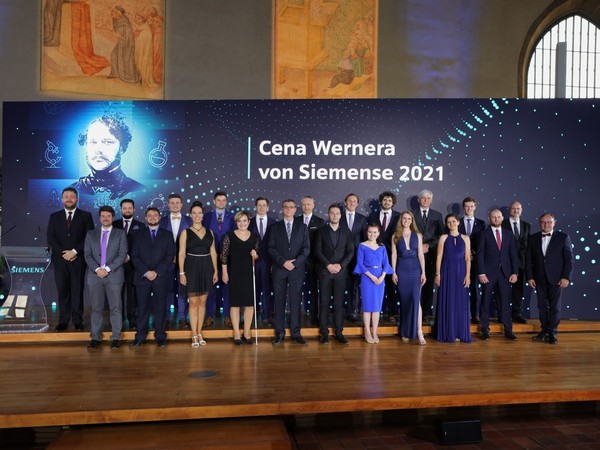Werner von Siemens Award 2021 in the category ‘the most important result of basic research’ goes to the team of authors led by Bruno De la Torre. These young researchers based at CATRIN of Palacký University Olomouc and the Czech Academy of Sciences have won the prize for their ground-breaking imaging method, thanks to which they were the first in the world to observe the inhomogeneous distribution of electron charge around a halogen atom, the so-called sigma hole. They have thus definitively confirmed its existence, which was theoretically predicted 30 years ago.
“The new imaging method that resulted in this scientific success opens the door to improving the materials and structural properties of a number of physical, biological, or chemical systems that affect our daily lives. The significance of their work is evidenced by the fact that it was published in the renowned journal Science and received considerable response,” say the organizers, explaining the benefits of the discovery in a press release.”
The award-winning team also includes Benjamin Mallada Faes, Aurelio Gallardo, and Maximilián Lamanec, who have been part of this extensive interdisciplinary cooperation. As a result, the scientists were able to dramatically increase the resolution of raster microscopy, which a few years ago enabled mankind to image individual atoms, moving from the atomic level to subatomic phenomena. They were thus able, for the first time, to directly observe the inhomogeneous distribution of electron charge around individual halogen atoms, the so-called sigma-hole. Accurate knowledge of the distribution of electron charge around atoms is vital to understanding the interactions between individual atoms and molecules, including chemical reactions.
“We are positive that our results will motivate other researchers to adopt our methodology in their studies in the near future. Our result will provide deeper insight into the use of halogen bonds in the development of new drugs or new macromolecular materials,” explain the members of the scientific team.
According to Bruno de la Torre, this success was possible only thanks to the cooperation with other top researchers. “Fortunately, I have always surrounded myself with brilliant scientists, from whom I have learnt a lot. However, I would like to highlight the influence of my doctoral thesis supervisor, José María Gómez Rodríguez, who helped me become a better scientist and to whose memory I dedicated this work.” For Bruno, this prize means recognition and prestige. “I am still an early career researcher, so I hope that this success will help me consolidate my research group,” he concludes.
“Bruno, unquestionably, ranks among top scientists, and thanks to his team at CATRIN, Palacký University can finally boast its first first-author article in the highly prestigious journal Science—a milestone that many senior scientists have yet to pass. It clearly shows that the emphasis on scientific excellence with a high degree of internationalisation that we have at CATRIN is the right route to take,” says CATRIN Director Pavel Banáš.
The Werner von Siemens Awards, which Czech Siemens hands out to the best students, educators, and young scientists, were presented for the 24th time this year. Independent juries selected the best works, projects, and personalities from the field of technical and natural sciences in eight categories: the most important result of basic research, the best diploma thesis, the best dissertation, and the best pedagogical worker, alongside special awards for overcoming obstacles in study, for the outstanding quality of women’s scientific work, for the best graduate (diploma/dissertation) thesis on the topic Industry 4.0,and for the best graduate (diploma/dissertation) thesis on the topic Smart Infrastructure and Energy. Along with students, leaders and supervisors of their theses receive this reward too.
This year, 568 applications were submitted, with 900,000 Czech crowns being allocated among the 21 awardees. Among the winners, women represent 24 percent. Most of the winners are from Czech Technical University in Prague (6 awards), followed by the Academy of Czech Sciences (4 awards) and Brno University of Technology (3 awards). Since the beginning of the competition, 14.3 million Czech crowns has been allocated among the winners.
